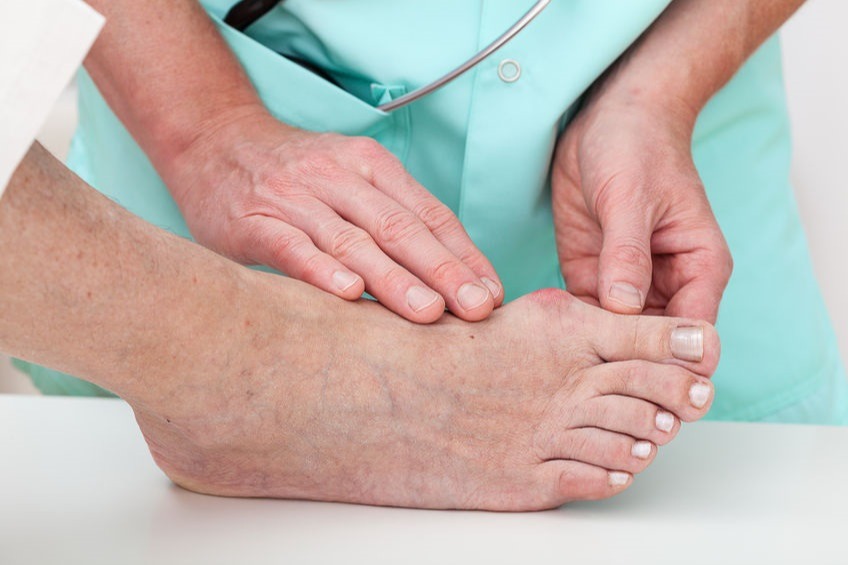Exploring Local Options: Finding the Best Stem Cell Treatment Near Me
In recent years, stem cell treatments have surged in popularity, marking a revolutionary shift in healthcare. These advances have found special relevance in foot health, offering more effective and less invasive options for treating various conditions. If you’ve been grappling with persistent foot pain or injuries, stem cell therapy might be your answer.
This blog aims to guide through the nuances of this innovative treatment and help to find the best stem cell treatment near me. By the end of this post, you’ll understand what stem cell therapy entails, why it’s beneficial, and how to locate trusted providers near you.
Understanding Stem Cell Therapy
Stem cell therapy involves the use of stem cells to treat or prevent a disease or condition. Stem cells are unique in that they have the ability to develop into various types of cells in the body, which allows them to facilitate healing and regeneration in damaged tissues. This capability positions stem cells at the forefront of modern medical treatments, creating exciting possibilities for recovery from injuries and chronic ailments.
- The Science Behind Stem Cells: At the core of stem cell therapy is the science of cellular regeneration. Stem cells can be classified into two main categories: embryonic stem cells, which are derived from early-stage embryos, and adult stem cells, which are found in various tissues in the body, such as bone marrow and adipose (fat) tissue. The latter are particularly relevant to treatments such as those targeting foot health, as they can be harvested and reinjected to promote healing in specific areas.
- Types of Stem Cells Used in Therapy: In current clinical practices, several types of stem cells are utilized for therapy, including mesenchymal stem cells (MSCs) and hematopoietic stem cells. MSCs, which can be derived from bone marrow, fat tissue, or even the umbilical cord, have shown great potential in repairing damaged tissue, reducing inflammation, and promoting the regeneration of new cells. Hematopoietic stem cells, often used in treatments related to blood disorders, may also play a role in regenerative therapies.
- How Stem Cell Therapy Works: The process of stem cell therapy generally begins with the collection of stem cells from the patient, commonly through a simple procedure like liposuction or bone marrow extraction. Once harvested, these cells are processed and prepared for injection into the affected area. During treatment, the stem cells are injected into the site of injury or pain, where they can stimulate healing processes, reduce inflammation, and lead to improved function. Patients often experience shorter recovery times and enhanced outcomes compared to traditional treatment methods.

Stem Cell Therapy And Foot Health
Benefits of Stem Cell Therapy for Foot Health
Stem cell therapy offers numerous benefits, particularly for individuals dealing with foot-related issues. Here are some of the most significant advantages:
- Faster Healing Times: One of the primary benefits of stem cell therapy is its ability to accelerate the body’s natural healing processes. Patients often experience quicker recovery from injuries, allowing them to return to their daily activities sooner.
- Reduced Inflammation: Stem cells have anti-inflammatory properties that help lessen swelling and discomfort in affected areas. By targeting inflammation, stem cell therapy can significantly enhance the overall healing experience.
- Improved Mobility: As stem cells regenerate damaged tissues and reduce inflammation, patients typically notice an improvement in their foot mobility. This restoration of function can lead to enhanced quality of life, enabling individuals to engage in activities they may have previously avoided due to pain or limited range of motion.
- Minimally Invasive: Compared to traditional surgical procedures, stem cell therapy is minimally invasive, meaning it causes less trauma and pain. This makes it an ideal treatment option for those who are unable or unwilling to undergo major surgery.
Conditions Treated by Stem Cell Therapy
Stem cell therapy has shown efficacy in treating a variety of foot-related conditions. Here are some of the key ailments that can benefit from this innovative approach:
- Plantar Fasciitis: This common condition involves inflammation of the plantar fascia, leading to heel pain and discomfort. Stem cell therapy can help regenerate the damaged tissue, reducing pain and promoting healing.
- Achilles Tendonitis: Often caused by overuse, Achilles tendonitis can result in significant discomfort along the back of the heel. Stem cell treatments can aid in repairing the tendon, enhancing recovery speed and reducing inflammation.
- Osteoarthritis: As a degenerative joint disease, osteoarthritis can significantly impact foot health, leading to pain and limited mobility. Stem cell therapy offers a regenerative approach to repair damaged cartilage and improve joint function.
- Bunions and Hammertoes: These structural deformities of the foot can lead to chronic pain and discomfort. Stem cell therapy may assist in regenerating soft tissue and easing inflammation, potentially alleviating pain associated with these conditions.
- Stress Fractures: Repetitive stress on the bones of the foot can lead to stress fractures, which require careful healing strategies. Stem cell therapy can facilitate faster recovery and promote the regeneration of bone tissue, helping patients return to normal activities sooner.

Bunion Treatment
Finding the Best Stem Cell Treatment Near You
When searching for the best stem cell treatment options in your area, it is essential to conduct thorough research and seek recommendations to ensure you receive quality care.
Research and Recommendations
Start by gathering information on local clinics that offer stem cell therapy. Look for patient testimonials, success stories, and reviews online to help gauge the experiences of others. Additionally, seek recommendations from healthcare professionals, friends, or family members who may have undergone similar treatments. Their insights can guide you toward reputable providers.
Factors to Consider
As you narrow down your options, consider several key factors:
- Credentials and Experience: Investigate the qualifications and experience of the medical professionals overseeing the treatment.
- Treatment Methods: Ensure the clinic uses established methods and practices for stem cell therapy, as varying techniques may influence outcomes.
- Facility Accreditation: Look for clinics that are accredited and maintain high standards of patient care.
- Follow-up Care: Inquire about the follow-up protocols and support offered post-treatment, as ongoing care can be crucial for recovery.
Questions to Ask
Before making a decision, feel free to ask prospective providers the following questions:
- What specific types of stem cells will be used during the procedure?
- How many similar procedures have you performed, and what were the results?
- What are the potential risks and side effects associated with this treatment?
- Will you provide a detailed plan for my treatment and aftercare?
- Are there financing options or payment plans available to help manage costs?
The Flagstaff Foot and Ankle Difference
At Flagstaff Foot and Ankle, we pride ourselves on delivering exceptional care tailored to the unique needs of each patient. Our commitment to excellence is reflected in our focus on the following key areas:
- Expertise and Experience: Our team consists of highly trained specialists with extensive experience in foot and ankle treatments, particularly in innovative therapies such as stem cell therapy. We stay abreast of the latest advancements in the field to provide our patients with the best possible outcomes.
- Personalized Treatment Plans: We understand that each patient’s condition and lifestyle are different. That’s why we develop personalized treatment plans that consider individual health backgrounds, preferences, and specific foot-related issues. Our comprehensive approach ensures that you receive care that is tailored just for you.
- Commitment to Excellence: Excellence is at the forefront of our practice. From initial consultations to follow-up care, we are dedicated to maintaining high standards of patient care, ensuring that every aspect of your treatment journey is seamless and effective. Our patient-centric philosophy places your well-being and satisfaction as our top priorities.
The Stem Cell Therapy Process
Understanding the process of stem cell therapy can help alleviate any concerns and prepare you for what to expect. Here’s a step-by-step guide to the treatment process at Flagstaff Foot and Ankle.
- Initial Consultation: The journey begins with an initial consultation where our specialists will assess your medical history, discuss your specific foot or ankle condition, and determine if you are a suitable candidate for stem cell therapy. During this visit, you will have the opportunity to ask questions and gain a comprehensive understanding of the foot treatment options.
- Harvesting and Processing: Once it is established that stem cell therapy is appropriate for you, the next step involves harvesting stem cells. This is typically done through a minimally invasive procedure, where a small sample of tissue (usually from bone marrow or adipose tissue) is collected. The harvested sample is then processed in a laboratory to isolate the stem cells, preparing them for injection.
- Injection and Follow-Up: After the processing is complete, the concentrated stem cells are injected directly into the affected area. This targeted delivery allows for maximum effectiveness in promoting healing and regeneration. Following the injection, patients are typically advised on post-treatment care and may schedule follow-up visits to assess progress, address any concerns, and adjust the treatment plan as necessary. Regular follow-ups are crucial to monitor recovery and ensure optimal outcomes.

Stem Cell Therapy Benefits
Potential Risks and Side Effects
While stem cell therapy is generally considered safe, there are potential risks and side effects that patients should be aware of before undergoing treatment:
- Infection: One of the primary risks associated with any injection procedure, including stem cell therapy, is the possibility of infection at the injection site. To minimize this risk, healthcare providers adhere to strict sterilization protocols and may prescribe antibiotics if deemed necessary.
- Tissue Damage: In rare cases, the injection of stem cells can lead to unintended tissue damage. This can occur due to improper placement of the injection or an adverse reaction to the stem cells. It’s essential for practitioners to have the proper training and experience to execute the procedure safely.
- Minimizing Risks: To further reduce the potential for complications, patients should ensure that they choose a qualified and experienced provider, follow pre- and post-treatment instructions carefully, and communicate openly about their medical history. Engaging in thorough discussions regarding the risks and benefits of the treatment can empower patients to make informed decisions for their health and well-being.
Cost of Stem Cell Therapy
The cost of stem cell therapy can vary significantly based on several factors that should be considered when evaluating treatment options.
Factors Influencing Cost
- Type of Stem Cells Used: Different sources of stem cells (e.g., bone marrow, adipose tissue) have varying costs associated with harvesting and processing.
- Clinic Location: The geographical location of the clinic can impact pricing due to differences in operational expenses and local market rates.
- Provider Expertise: Highly experienced medical professionals may charge a premium for their services, reflecting their advanced skills and success rates.
- Treatment Complexity: The complexity of individual cases may require additional procedures or longer treatment times, influencing overall costs.
- Pre- and Post-Treatment Care: Comprehensive care, including initial consultations, follow-up visits, and any required therapies, can add to the total expenditure.
Financing and Insurance Options
Regarding financing options, many clinics, including Flagstaff Foot and Ankle, offer flexible payment plans to make treatment more accessible. Patients are encouraged to discuss these options during their initial consultation. Additionally, while stem cell therapy is often considered an out-of-pocket expense, some insurance providers may cover portions of the treatment depending on the medical necessity and the specific policy. It is advisable for patients to check with their insurance provider to understand their coverage options and any pre-authorization requirements that may apply.
Conclusion
Stem cell therapy is a promising treatment option for various foot and ankle conditions, offering a personalized and minimally invasive approach to healing. With a commitment to excellence, Flagstaff Foot and Ankle is dedicated to providing the highest quality of care throughout each stage of the treatment process. By understanding potential risks and costs associated with stem cell therapy, patients can make informed decisions about their health and well-being. So, if you are considering stem cell therapy for your foot or ankle condition, we encourage you to schedule an initial consultation with our team of experts today. Let us help you take the first step towards optimal health and recovery!
Flagstaff Foot Doctors: Anthony Rosales DPM
https://www.google.com/maps?cid=8835841318590452161
421 N Humphreys St, Flagstaff, AZ 86001, United States
(928) 774-4825
https://flagstafffootandankle.com/
